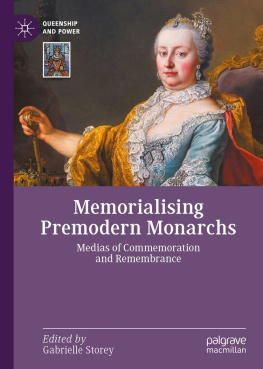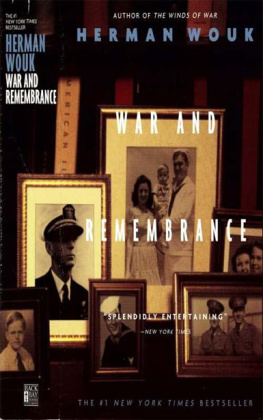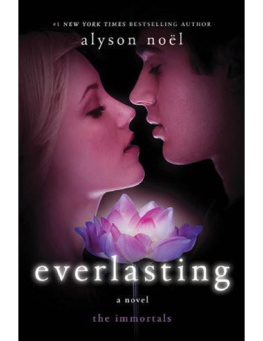Maoz Azaryahu
An Everlasting Name
Maoz Azaryahu
An Everlasting Name
Cultural Remembrance and Traditions of Onymic Commemoration
ISBN 9783110722994
e-ISBN (PDF) 9783110723014
e-ISBN (EPUB) 9783110723021
Bibliographic information published by the Deutsche Nationalbibliothek
The Deutsche Nationalbibliothek lists this publication in the Deutsche Nationalbibliografie; detailed bibliographic data are available on the Internet at http://dnb.dnb.de.
2021 Walter de Gruyter GmbH, Berlin/Boston
Dedication
To Renate
Acknowledgements
In the age of the internet, writing a book has become a journey in cybernetic space where books, newspapers, and documents often are a few clicks away. For someone who wrote his dissertation in the 1980s using a typewriter and searching microfilms and books stored in shelves, the possibilities offered by digital archiving equals a bonanza. The easiness with which information has become available still surprises me. I still dont take the digital access to information for granted. I am grateful for those who invested in digitizing data and uploading it for the public to access. Of course libraries are still indispensable for accessing books and scholarly studies protected by copyright. Notwithstanding searching the web, consulting books made of paper still has its charm, even when carrying them home using public transportation at times may be challenging. But it all depends on ones ability to gauge ones carrying capacity.
It goes without saying that I am indebted to the many scholars and authors whose work I consulted in my quest to explore the human quest for an everlasting name. Mentioning the names of these authors is my way of thanking them by affirming their on-going relevance and hence reputation. Not that my humble study can make a real difference in this regard, but references to named individuals and to their ideas is not only an academic ritual. It is a way of paying back by paying attention and affirming their continued impact on people unbeknown to them.
A clich almost, but writing a book cant be accomplished without the support of those who were generous enough to share in the prolonged process of formulating ideas and insights in an intelligible language. I am much obliged to my wife Renate Schein, who repeatedly read fragmentary versions of the manuscript. Her patience was almost endless, and knowing of what it entailed in terms of careful reading, this was far from self-evident. Her encouragement was indispensable in bleak moments, when the obstacles seemed to doom the project. A keen critic, she pointed to weaknesses of reasoning and to faulty arguments.
I would like to express my gratitude to Anton Berkovsky, whose vast knowledge of history and culture as well as his remarkable skills in tracing digitally encoded information was crucial for the research. And I am also grateful to Stanley Waterman, a colleague and a friend, whose comments and suggestions greatly benefitted the book.
Introduction
Dedicated in 1982 and famed for its distinct design, a powerful aspect of the Vietnam Veterans Memorial at the Mall in Washington DC is the names of American soldiers inscribed on the black granite wall. The film To Heal a Nation features the story of building the memorial from the perspective of Jan C. Scruggs, the veteran who conceived the idea of a national memorial. An early scene describes a coincidental meeting at an eatery with another veteran. Scruggs asked about a certain soldier, and learnt that he had been killed, but both failed to remember his name. What was his name? asked Scruggs in exasperation. This forgetfulness triggered a process of commemoration that culminated in the dedication ceremony of the Vietnam Veterans Memorial. After the official speeches, a veteran approaches Scruggs, and tells him: The best thing, buddy, was the names [] God bless you for the names, buddy! This emotional scene suggests a closure: in contrast to human failure to remember the name of an individual soldier featured at the beginning of the account, the memorial wall is entrusted with the task to forever remember the names of all fallen soldiers.
Forgetting names is a common, though irritating phenomenon of everyday life. It suggests various psychological interpretations or is susceptible to being explained in terms of various mental conditions. Freud remembered how while telling a fellow passenger on a train his impression of the frescoes in the Duomo of Orvieto, he had realized to his amazement that he was unable to remember the theme of the frescoes and the name of the painter, Signorelli (Zilboorg 1962, 166). In Freuds account, he recalled the painters name by a series of free associations. Forgetting names in the midst of a conversation is an inconvenience that, combined with the often frantic attempt to recall the name, disrupts the flow of the exchange.
For Scruggs, forgetting the name of a fellow soldier was more than a mere disruption of a casual exchange between two acquaintances. It was a trigger to act that converted a cognitive failure into a national project of public remembrance. The emotion-laden story featured in the film brings forth two conventional notions about remembrance and commemoration. One is the obligation of the living to remember the dead, an obligation that is a conscious attempt to defy the pessimistic observation made more than two millennia ago that No one remembers the former generations, and even those yet to come will not be remembered by those who follow them. (









